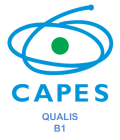Loop-mediated isothermal amplification test as an alternative for molecular diagnosis of natural infection by Anaplasma marginale
DOI:
https://doi.org/10.21708/avb.2025.19.1.12583Abstract
Bovine anaplasmosis is one of the most important tick-borne diseases caused by Anaplasma marginale, an intraerythrocytic parasite of cattle. Anaplasmosis is considered endemic in tropical and subtropical regions and results in significant economic losses in the livestock industry. The disease begins with a high rate of parasite multiplication in the host but is often asymptomatic, making it difficult to implement control measures. Reducing uncertainty of infection through early detection, even in conditions of low parasitemia, can assist producers in management decisions and reduce the economic impact of anaplasmosis. Thus, the aim of this study was to evaluate the Loop-Mediated Isothermal Amplification (LAMP) test as a rapid and cost-effective alternative for the molecular diagnosis of natural infection by A. marginale. Assessing the quality of anaplasmosis diagnostic assays allows for the appropriate selection of tests for clinical and epidemiological interest. To evaluate the LAMP test, 150 field samples of blood from buffaloes and cattle from farms in Amapá, Brazilian Amazon, were comparatively examined by LAMP, PCR, and real-time PCR. The prevalence of anaplasmosis detected by LAMP (56%) was higher than real-time PCR (28.66%) and conventional PCR (3.33%). Although the kappa agreement between the techniques was not satisfactory, the results suggest that LAMP is a rapid, sensitive, and specific technique for detecting A. marginale and can be an additional diagnostic option in the clinical routine for anaplasmosis in cattle and buffaloes.
Downloads

Downloads
Pubblicato
Fascicolo
Sezione
Licenza
Copyright (c) 2025 Acta Veterinaria Brasilica

TQuesto lavoro è fornito con la licenza Creative Commons Attribuzione 4.0 Internazionale.
Autores que publicam na Acta Veterinaria Brasilica concordam com os seguintes termos: a) Autores mantém os direitos autorais e concedem à revista o direito de primeira publicação, com o trabalho simultaneamente licenciado sob a Licença Creative Commons Attribution que permite o compartilhamento do trabalho com reconhecimento da autoria e publicação inicial nesta revista. b) Autores têm autorização para assumir contratos adicionais separadamente, para distribuição não-exclusiva da versão do trabalho publicada nesta revista (ex.: publicar em repositório institucional ou como capítulo de livro), com reconhecimento de autoria e publicação inicial nesta revista. c) Autores têm permissão e são estimulados a publicar e distribuir seu trabalho online (ex.: em repositórios institucionais ou na sua página pessoal) a qualquer ponto antes ou durante o processo editorial, já que isso pode gerar alterações produtivas, bem como aumentar o impacto e a citação do trabalho publicado (Veja O Efeito do Acesso Livre).


 Esta obra está licenciada com uma Licença
Esta obra está licenciada com uma Licença 